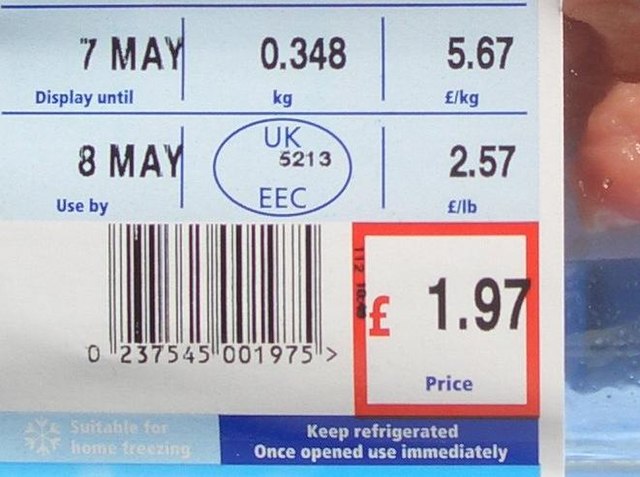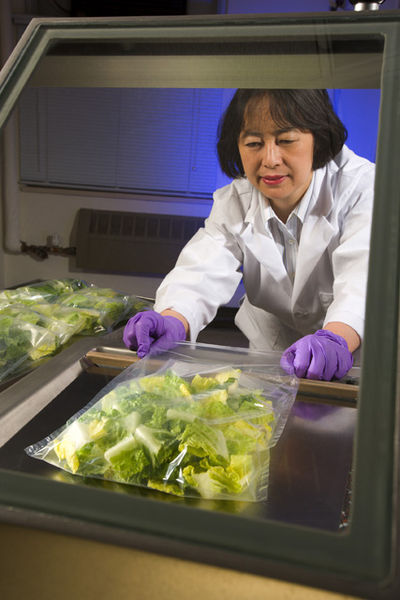Shelf life is the length of time that a commodity may be stored without becoming unfit for use, consumption, or sale. In other words, it might refer to whether a commodity should no longer be on a pantry shelf, or no longer on a supermarket shelf. It applies to cosmetics, foods and beverages, medical devices, medicines, explosives, pharmaceutical drugs, chemicals, tyres, batteries, and many other perishable items. In some regions, an advisory best before, mandatory use by or freshness date is required on packaged perishable foods. The concept of expiration date is related but legally distinct in some jurisdictions.
This pack of diced pork says 'Display until' 7 May and 'Use by' 8 May.
Package testing: heat sealing film for evaluation of shelf life of lettuce
An electric battery is a source of electric power consisting of one or more electrochemical cells with external connections for powering electrical devices. When a battery is supplying power, its positive terminal is the cathode and its negative terminal is the anode. The terminal marked negative is the source of electrons that will flow through an external electric circuit to the positive terminal. When a battery is connected to an external electric load, a redox reaction converts high-energy reactants to lower-energy products, and the free-energy difference is delivered to the external circuit as electrical energy. Historically the term "battery" specifically referred to a device composed of multiple cells; however, the usage has evolved to include devices composed of a single cell.
Various cells and batteries (top left to bottom right): two AA, one D, one handheld ham radio battery, two 9-volt (PP3), two AAA, one C, one camcorder battery, one cordless phone battery
A voltaic pile, the first battery
Italian physicist Alessandro Volta demonstrating his pile to French emperor Napoleon Bonaparte
From top to bottom: a large 4.5-volt 3R12 battery, a D Cell, a C cell, an AA cell, an AAA cell, an AAAA cell, an A23 battery, a 9-volt PP3 battery, and a pair of button cells (CR2032 and LR44)






